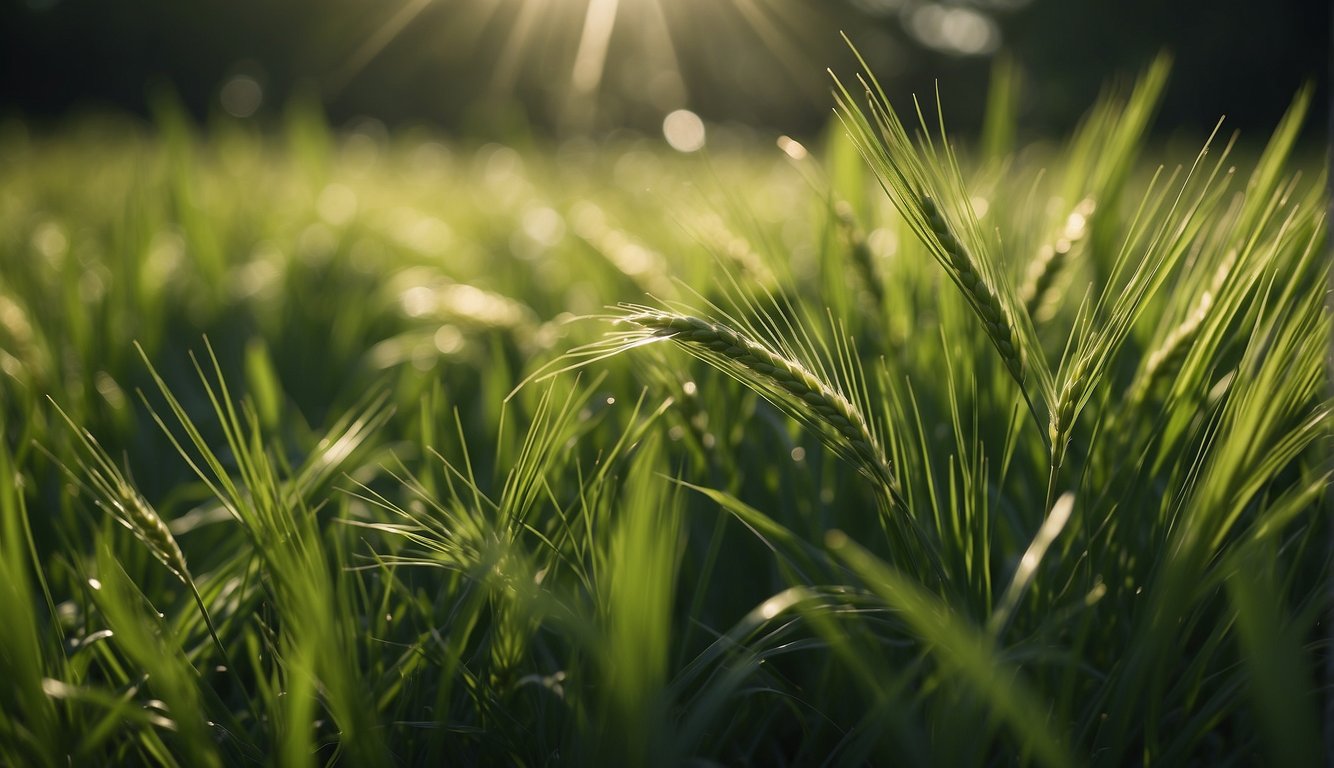TheHerbProf.com is a treasure trove of knowledge for those interested in natural healing and herbal remedies. The website is run by Paul Johnston MD. A naturopathic who has not only received extensive education in the field but also has personal experience in self-healing.
Barley grass is a type of young leafy plant that comes from the barley plant. What about barley grass benefits? It is a nutrient-dense superfood that has gained popularity in recent years due to its numerous health benefits. As a nutritionist, I often recommend adding barley grass to my clients’ diets as a way to boost their overall health and well-being.
One of the primary benefits of barley grass is its high concentration of vitamins, minerals, and antioxidants. It is a rich source of vitamin C, vitamin A, iron, calcium, and potassium, among others. These nutrients can help support a healthy immune system, improve bone health, and promote healthy digestion. Additionally, the antioxidants found in barley grass can help protect the body against damage from free radicals, which can contribute to chronic diseases such as cancer and heart disease.
Another benefit of barley grass is its ability to help regulate blood sugar levels. Studies have shown that consuming barley grass can help improve insulin sensitivity and lower blood sugar levels in individuals with type 2 diabetes. This makes it a great addition to a diabetic-friendly diet. Overall, incorporating barley grass into your diet can provide numerous health benefits and help support a healthy lifestyle.
Nutritional Profile of Barley Grass
Barley grass is a nutrient-dense food that is packed with vitamins, minerals, protein, and fiber. It is a great source of antioxidants, vitamins, and minerals that are essential for optimal health.
Vitamins and Minerals in Barley Grass
Barley grass is rich in vitamins and minerals that are essential for good health. It contains high levels of vitamin A, magnesium, calcium, iron, phosphorus, potassium, selenium, copper, and manganese. These vitamins and minerals play a vital role in maintaining good health and preventing diseases.
Protein and Amino Acids Content
Barley grass is a good source of protein and amino acids. It contains all the essential amino acids that the body needs to build and repair tissues. It is also rich in non-essential amino acids that are important for overall health.
Fiber: Soluble and Insoluble
Barley grass is high in both soluble and insoluble fiber. Soluble fiber helps to reduce cholesterol levels in the blood and promotes healthy digestion. Insoluble fiber adds bulk to the stool, promotes regular bowel movements, and prevents constipation.
Barley grass is a nutritional powerhouse that is rich in vitamins, minerals, protein, and fiber. It is a great addition to a healthy diet and can help to promote overall health and prevent diseases.
Health Benefits of Barley Grass

Barley grass is a nutrient-rich food that has been gaining popularity in recent years due to its many health benefits. In this section, I will discuss some of the benefits of consuming barley grass.
Antioxidant Effects and Free Radical Scavenging
Barley grass is a rich source of antioxidants, which are compounds that protect the body from damage caused by free radicals. Free radicals are unstable molecules that can cause oxidative stress and damage to cells, which can lead to various diseases such as cancer and heart disease. Barley grass contains a variety of antioxidants such as vitamin C, vitamin E, and beta-carotene, which can help to neutralize free radicals and reduce the risk of these diseases.
Supports Heart Health
Research has shown that consuming barley grass can help to support heart health by reducing cholesterol levels and blood pressure. Barley grass contains beta-glucan, a type of soluble fiber that has been shown to lower cholesterol levels. Additionally, the potassium and magnesium in barley grass can help to lower blood pressure and reduce the risk of heart disease.
Regulates Blood Sugar and Cholesterol
Barley grass has been shown to help regulate blood sugar levels and improve insulin sensitivity. This can be beneficial for people with diabetes or those at risk of developing the disease. Additionally, the beta-glucan in barley grass can help to lower cholesterol levels, which can also reduce the risk of heart disease.
Boosts Immune System and Reduces Inflammation
Barley grass contains various nutrients such as vitamin C, vitamin A, and iron, which can help to boost the immune system and reduce inflammation. Inflammation is a natural response of the body to injury or infection, but chronic inflammation can lead to various diseases such as cancer and heart disease. Consuming barley grass can help to reduce inflammation and support overall health.
Digestive Health and Gut Flora
Barley grass is a good source of fiber, which can help to promote digestive health and regulate bowel movements. Additionally, the prebiotic fibers in barley grass can help to feed the beneficial bacteria in the gut, which can improve gut flora and overall health.
Weight Management and Metabolism
Barley grass is low in calories and high in fiber, making it a good food choice for weight management. Additionally, the nutrients in barley grass can help to support metabolism and energy production, which can also aid in weight loss.
Consuming barley grass can have many health benefits such as supporting heart health, regulating blood sugar and cholesterol levels, boosting the immune system, improving digestive health, and aiding in weight management. Incorporating barley grass into your diet can be a simple and effective way to improve your overall health and well-being.
Barley Grass in Dietary Use
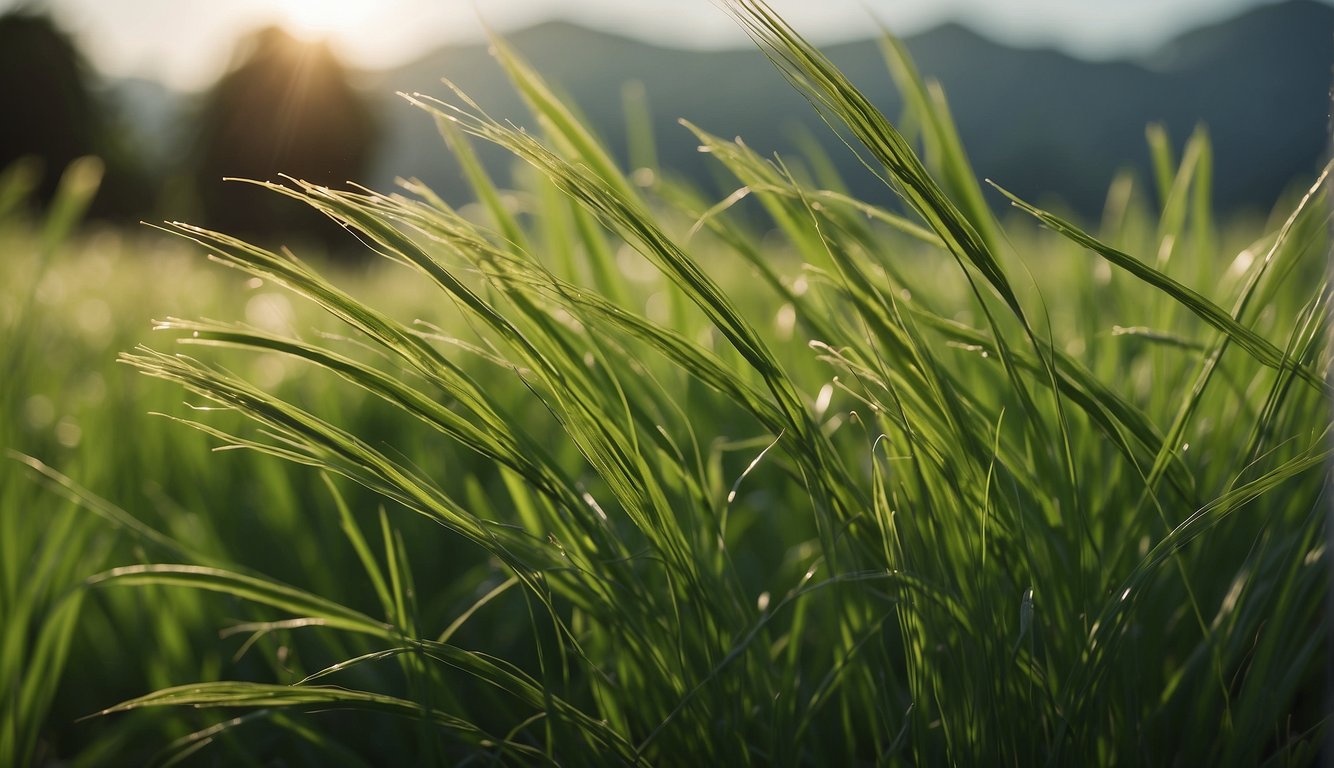
As someone who values a healthy diet, I have found that incorporating barley grass into my meals has been a great way to boost my nutrient intake. Barley grass is a great source of dietary fiber, which is important for maintaining healthy digestion and preventing constipation. It also contains a variety of vitamins and minerals, including vitamin A, iron, and magnesium, which are essential for overall health and wellbeing.
Barley Grass Powder and Juice
One of the most common ways to consume barley grass is in the form of powder or juice. Barley grass powder can be added to smoothies, juices, or even water for a quick and easy nutrient boost. Barley grass juice, on the other hand, is a concentrated form of the plant and is often found at juice bars or health food stores.
Incorporating into Smoothies and Meals
If you’re looking for a way to incorporate barley grass into your meals, adding it to smoothies is a great option. Simply blend together some fresh or frozen fruit, a handful of greens, and a scoop of barley grass powder for a delicious and nutritious smoothie. You can also sprinkle barley grass powder on top of salads or mix it into soups and stews for an extra nutrient boost.
Supplements and Greens Formulas
For those who prefer a more convenient option, barley grass supplements and greens formulas are also available. These products often contain a blend of different greens and superfoods, including barley grass, and can be taken in capsule or powder form. However, it’s important to note that supplements should not be relied on as a replacement for a healthy diet.
Overall, incorporating barley grass into your diet is a great way to boost your nutrient intake and support overall health and wellbeing. Whether you choose to consume it in the form of powder, juice, or supplement, adding barley grass to your diet is a simple and effective way to support a healthy lifestyle.
Potential Side Effects and Precautions

As with any dietary supplement, it is important to be aware of potential side effects and precautions when consuming barley grass. While barley grass is generally safe and beneficial for most people, it is important to consider the following information.
Interactions with Medications and Health Conditions
Barley grass may interact with certain medications, particularly blood thinners such as warfarin. It is important to consult with your healthcare provider before consuming barley grass if you are taking any medications or have any health conditions.
Considerations for Allergies and Celiac Disease
Individuals with allergies to wheat or other grains may experience an allergic reaction to barley grass. Additionally, barley grass may contain gluten, which can be harmful to individuals with celiac disease or gluten intolerance. It is important to look for gluten-free barley grass products if you have celiac disease or gluten intolerance.
It is always important to follow recommended dosages when consuming barley grass, as consuming too much may lead to negative side effects. Additionally, it is important to purchase barley grass from a reputable source to ensure safety and quality. By following these precautions, you can safely and confidently enjoy the many benefits of barley grass.
Additional Nutritional Components

Barley grass is a nutrient-dense superfood that is packed with a variety of beneficial compounds. In addition to vitamins and minerals, barley grass also contains unique compounds that can support overall health and wellness.
Chlorophyll and Enzymatic Content
One of the most notable components of barley grass is chlorophyll. Chlorophyll is a green pigment that is found in many plants and is responsible for their green color. Barley grass is particularly high in chlorophyll, which has been shown to have a variety of health benefits. Chlorophyll is believed to support healthy digestion, promote detoxification, and even help fight bad breath.
Barley grass also contains a variety of enzymes, including superoxide dismutase (SOD). SOD is an antioxidant enzyme that helps to protect cells from oxidative damage. By neutralizing harmful free radicals, SOD can help to prevent cellular damage and support overall health.
Unique Compounds in Barley Grass
In addition to chlorophyll and enzymes, barley grass also contains a variety of unique compounds that can support overall health and wellness. For example, barley grass contains saponarin, a flavonoid that has been shown to have anti-inflammatory and antioxidant properties. Barley grass also contains gamma-aminobutyric acid (GABA), an amino acid that has been shown to have a calming effect on the nervous system.
Barley grass is also rich in polyphenols, which are powerful antioxidants that can help to protect cells from oxidative damage. Polyphenols have been shown to have a variety of health benefits, including reducing inflammation, improving heart health, and even reducing the risk of certain types of cancer.
Overall, barley grass is a nutrient-dense superfood that contains a variety of beneficial compounds. By incorporating barley grass into your diet, you can support overall health and wellness and enjoy the many benefits of this powerful superfood.
Barley Grass in Context

As a superfood, barley grass is often compared to other greens such as kale, spinach, and wheatgrass. While these greens are all nutrient-dense, barley grass stands out for its unique combination of vitamins, minerals, and antioxidants.
Comparison with Other Superfoods
Barley grass contains more vitamin C than spinach and more calcium than milk. It also contains more iron than spinach and more potassium than bananas. Additionally, barley grass is a good source of fiber, which is important for maintaining healthy digestion. When compared to wheatgrass, barley grass has a milder taste and is less likely to cause digestive discomfort.
Historical and Cultural Significance
Barley has been cultivated for thousands of years and was one of the first cereal grains to be domesticated. In ancient times, barley was used to make beer and bread. Barley grass, the young shoots of the barley plant, has been used for medicinal purposes for centuries. In traditional Chinese medicine, barley grass is believed to have cooling properties and is used to treat conditions such as fever and inflammation.
Barley grass is a nutrient-dense superfood that has been used for both culinary and medicinal purposes throughout history. Its unique combination of vitamins, minerals, and antioxidants make it a valuable addition to a healthy diet.
Cosmetic and External Benefits
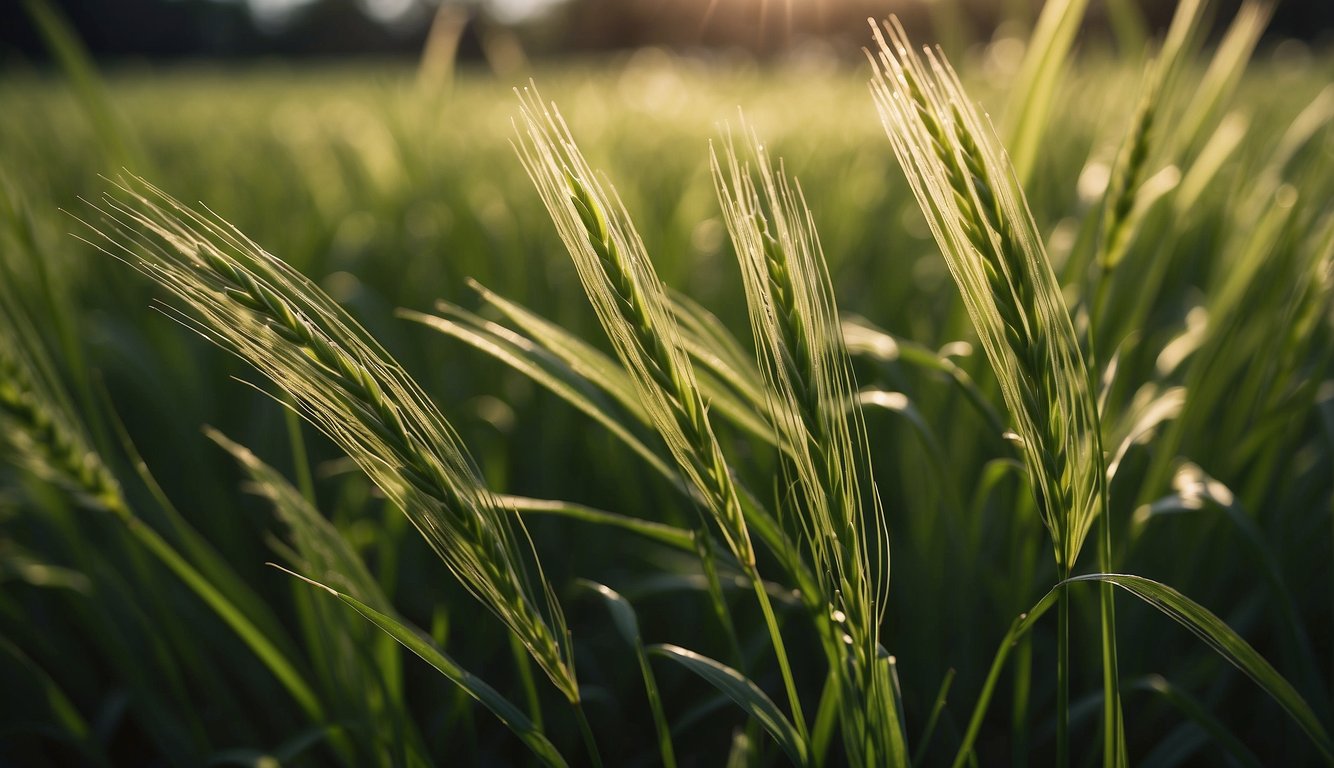
Barley grass is rich in antioxidants and nutrients that can help improve skin health and protect against UV radiation. Here are some of the cosmetic and external benefits of barley grass:
Skin Health and UV Protection
Barley grass contains vitamin E, which is essential for maintaining healthy skin. Vitamin E is an antioxidant that helps protect against free radicals that can damage skin cells and cause premature aging. It also helps to moisturize the skin, keeping it soft and supple.
In addition to vitamin E, barley grass also contains chlorophyll, which has anti-inflammatory properties that can help reduce redness and irritation in the skin. Chlorophyll also helps to detoxify the skin, removing impurities and promoting healthy cell growth.
Barley grass can also help protect against UV radiation. UV radiation from the sun can cause damage to skin cells, leading to wrinkles, age spots, and even skin cancer. Barley grass contains compounds called flavonoids, which have been shown to help protect against UV radiation.
Overall, incorporating barley grass into your diet can help promote healthy, youthful-looking skin and protect against the damaging effects of UV radiation.
Special-Purpose Grain – Get Yours Here.
Today Barley is typically a special-purpose grain with many different varieties rather than just a general market crop like wheat. It is a valuable stock feed (often replacing corn). This special-purpose grain is a minor source of flour and breakfast foods. It is often used in soups such as Scotch Broth. In the U.S., most spring barley comes from the western states, and most winter barley is grown in the southeastern states for fall and spring pasture and as a cover crop.
In the late 1930s, dairy scientists at the University of Wisconsin noticed that the nutritional value of summer milk was much higher than that of cow’s milk produced during other seasons of the year. When fed on summer milk, experimental animals thrived, but when it was replaced with winter mild they eventually became sick and died. Scientists noted that it was the enriching meadow and cereal such as barley grasses the cows had free access to during the summer months. This makes one wonder about the feedlot dairy farming practices now prevalent across the United States.
Environmental Impact and Sustainability

Barley Grass Cultivation and Eco-Friendliness
As someone who values sustainability and eco-friendliness, I am pleased to report that barley grass cultivation has a relatively low environmental impact. Compared to other crops, barley grass requires less water, fertilizer, and pesticides, making it a more sustainable option. Additionally, barley grass is often grown as a cover crop, which helps prevent soil erosion and provides other environmental benefits.
Barley grass cultivation is also relatively eco-friendly because it can be grown without the use of harmful chemicals. In fact, many farmers choose to grow barley grass organically, which further reduces the environmental impact of cultivation. Organic barley grass is grown without synthetic fertilizers, pesticides, or herbicides, making it a more sustainable option for those who prioritize eco-friendliness.
Overall, barley grass cultivation is a sustainable and eco-friendly option for those looking to reduce their environmental impact. By choosing to consume barley grass, you can feel confident that you are making a positive impact on the environment without sacrificing nutritional value.
Comparison Test For Barley Grass
Comparison tests have shown Barley Grass Juice Powder to have as much as thirty times more vitamin B-1 than cow’s milk and eleven times the amount of Calcium. Barley Grass Juice Powder holds about six times the amount of carotene than spinach. It has seven times the amount of vitamin C, than an equal amount of oranges. Barley also has B-12, a vitamin that works to overcome fatigue and anemia, an important factor for many vegetarians.
Dr. Ann Wigmore who founded the Hippocrates Health Institute in Boston, Massachusetts was a pioneer of the use of Barley and Wheat grass juices to cure cancer and other health-treating diseases. People came to Doctor Wigmore who were given no hope by their doctors. These were people who crawled, barely walked, or had to be carried in, but somehow seemed to survive even by the slimmest of margins. They got well and lived to tell or write about it! Such as Eydie Maie Hunsberger, who wrote the book “How I Conquered Cancer Naturally!
Preparation and Storage Tips
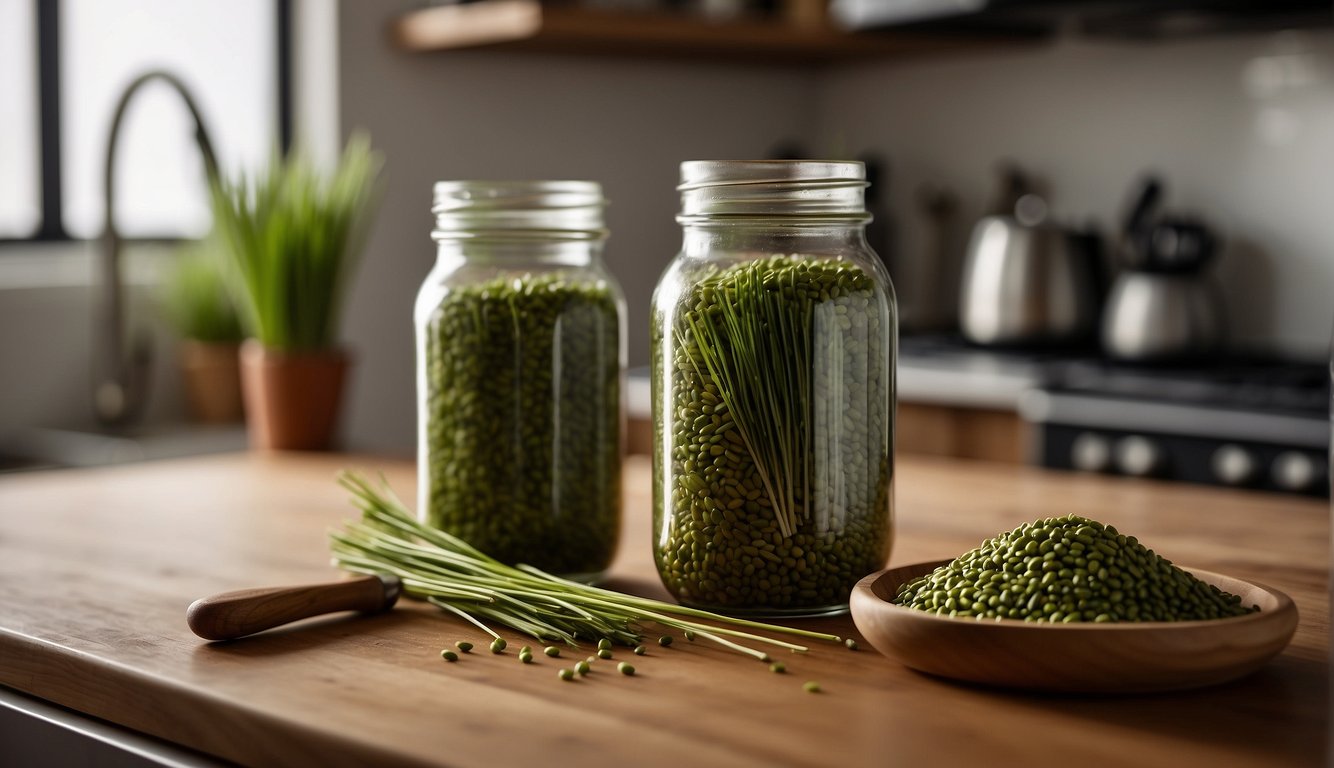
As with any food or supplement, proper preparation and storage of barley grass powder and juice powder is essential to maintain its freshness and nutritional quality. Here are some best practices to keep your barley grass products fresh and potent.
Best Practices for Freshness and Potency
1. Store in a cool, dry place: Barley grass powder and juice powder should be stored in a cool, dry place away from direct sunlight, heat, and humidity. Exposure to moisture can cause the powder to clump and lose its potency.
2. Use airtight containers: Once opened, transfer the powder into an airtight container to prevent air and moisture from entering. This will help maintain the powder’s freshness and potency.
3. Follow the expiration date: Barley grass powder and juice powder have an expiration date, and it is essential to follow it. Expired products may have lost their nutritional value, and consuming them may cause adverse effects.
4. Avoid exposure to air: Exposure to air can cause oxidation, which can reduce the nutritional value of the powder. Always keep the container tightly sealed when not in use.
5. Do not mix with hot liquids: Mixing barley grass powder or juice powder with hot liquids can cause the powder to clump and lose its potency. It is best to mix it with cold or room temperature liquids.
6. Use a clean spoon: Always use a clean spoon when scooping the powder to prevent contamination. Do not use a wet spoon as it can cause the powder to clump.
By following these best practices, you can ensure that your barley grass powder and juice powder remain fresh and potent, providing you with the maximum nutritional benefits.
Before You Go – Barley Grass Benefits

After researching the benefits of barley grass, I am confident in recommending it as a nutritious addition to one’s diet.
Barley grass is a rich source of vitamins and minerals, including vitamins A, B, C, E, and K, as well as calcium, iron, magnesium, and potassium. It also contains antioxidants and enzymes that can help support overall health and well-being.
Some of the potential benefits of consuming barley grass include improved digestion, increased energy levels, and enhanced immune function. It may also help lower cholesterol levels and reduce the risk of certain chronic diseases.
Overall, incorporating barley grass into one’s diet can be a simple and effective way to boost overall health and wellness. Whether consumed in powder or juice form, it is a versatile and nutrient-dense food that can be easily added to smoothies, salads, and other dishes.
Barley Grass Benefits and TheHerbProf.com: A Green and Glorious Connection!
Barley Grass Breakdown: At TheHerbProf.com, we’re all about Barley Grass! We delve into its health-boosting properties and its role in herbal medicine.
Herbal Highlights: Learn how Barley Grass can greenify your herbal routine. It’s not just a grass; it’s a wellness wonder!
Culinary Creations: Barley Grass in the kitchen? Absolutely! We share innovative recipes that bring out the best in Barley Grass.
Health and Wellness: We’re all about health and wellness, and Barley Grass is a key part of this mission. It’s packed with compounds that promote good health.
Community Connection: Join our community of Barley Grass enthusiasts! Share your journey, learn from others, and make some new friends.
So, whether you’re a Barley Grass buff or just starting your herbal journey, TheHerbProf.com is your trusty companion. Dive in, explore, and stay healthy! Check our home page here!
References:
Little Herb Encyclopedia, by Jack Ritchason; N.D., Woodland Publishing Incorporated, 1995
The Ultimate Healing System, Course Manual, Copyright 1985, Don Lepore
Planetary Herbology, Michael Tierra, C.A., N.D., Lotus Press, 1988
Handbook of Medicinal Herbs, by James A. Duke, Pub. CRP Second Edition 2007
The Complete Medicinal Herbal, by Penelope Ody, Published by Dorling Kindersley
Before You Go – Check the Following Articles!
Frequently Asked Questions – Barley Grass Benefits
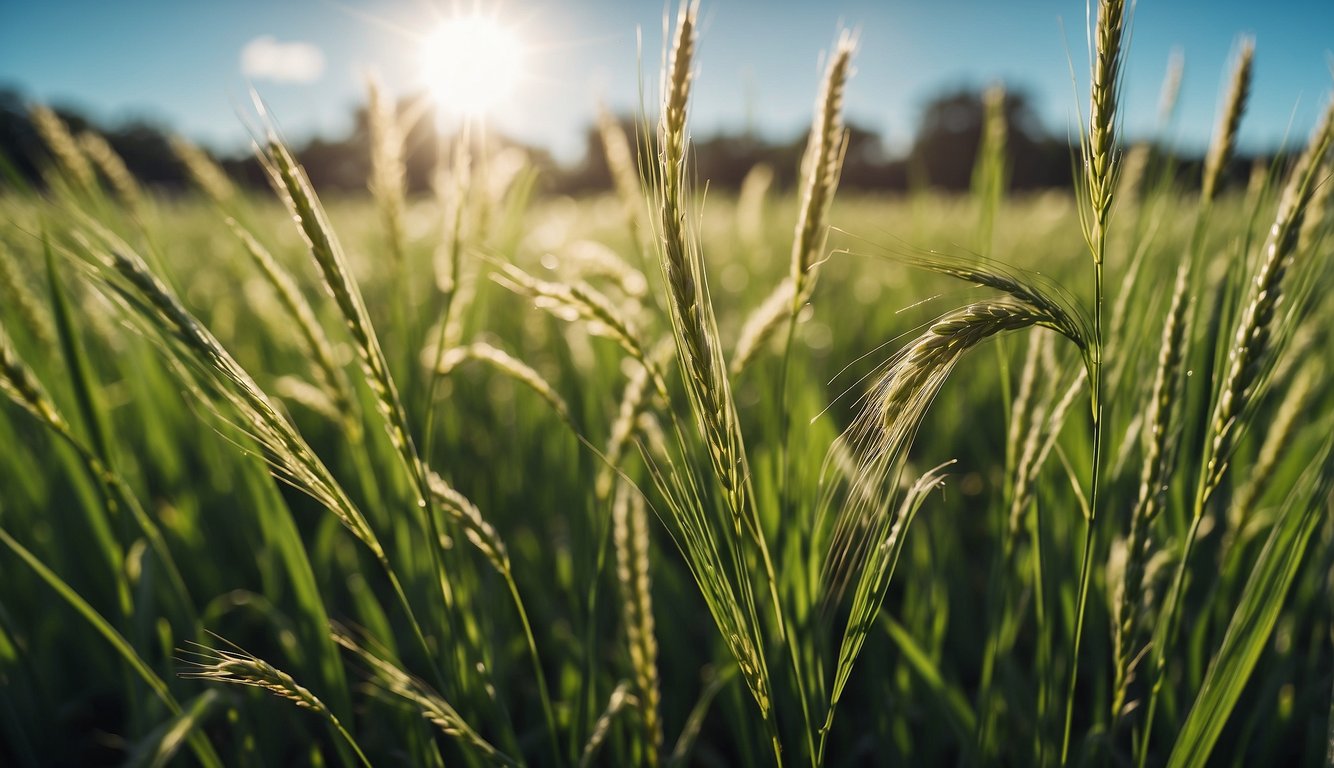
What are the potential health advantages of consuming barley grass?
Barley grass is packed with nutrients that may provide numerous health benefits. It is a rich source of vitamins A, C, E, and K, as well as minerals such as calcium, iron, and magnesium. Additionally, it contains antioxidants and chlorophyll, which may help protect against cellular damage and inflammation. Some studies suggest that consuming barley grass may help lower cholesterol levels, improve digestion, and boost the immune system.
Can barley grass help in detoxifying the body?
Barley grass is believed to have detoxifying properties due to its high chlorophyll content. Chlorophyll is known to bind to toxins and heavy metals, helping to remove them from the body. Additionally, barley grass may help support liver function, which is essential for eliminating toxins from the body.
Are there any side effects associated with taking barley grass supplements?
Barley grass is generally considered safe for most people when consumed in moderation. However, some people may experience mild side effects such as nausea, diarrhea, or an upset stomach. It is important to consult with a healthcare provider before taking any new dietary supplement, especially if you have a medical condition or are taking medication.
Who should avoid incorporating barley grass into their diet?
While barley grass is generally safe for most people, there are some individuals who may need to avoid it. People with celiac disease or gluten intolerance should avoid barley grass as it contains gluten. Additionally, pregnant or breastfeeding women should consult with a healthcare provider before consuming barley grass supplements.
What is the optimal time of day to consume barley grass for maximum benefits?
There is no specific time of day that is best for consuming barley grass. It can be taken at any time of day, either on an empty stomach or with a meal. However, it is important to follow the recommended dosage on the supplement label and to consult with a healthcare provider before taking any new dietary supplement.
How should barley grass powder be prepared for consumption?
Barley grass powder can be added to water, juice, smoothies, or other beverages. It is important to follow the recommended dosage on the supplement label and to mix the powder thoroughly to ensure even distribution. Some people may prefer to mix the powder with a small amount of water first before adding it to a larger beverage.
